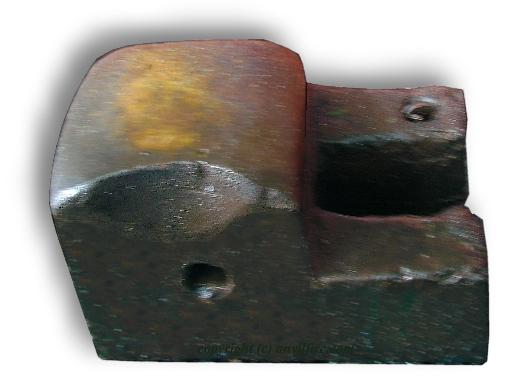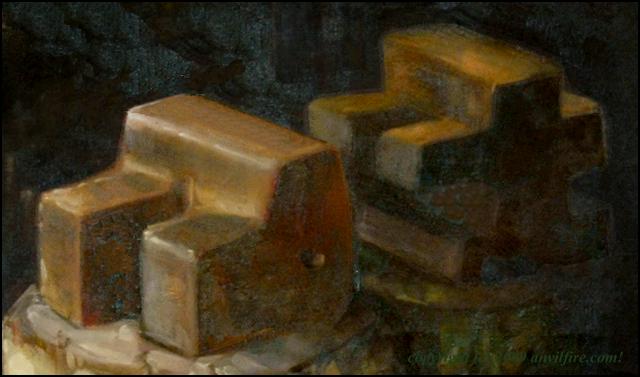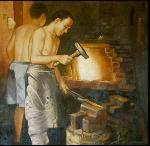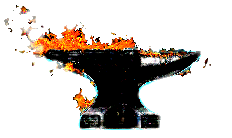|
|
| |
| |
|
|
|
|
|
|
|
|
| |
| |
| |
| |
| |
| |
| |
| |
| |
| |
|




| |
| |
|
Tell them you found it on anvilfire.com!
|
Blacksmithing and metalworking questions answered.
|
Anvils,
Amboß,
l'enclume,
incudine,
el yunque, bigornia,
städ,
incus,
aambeeld,
batente
|
|



These domed "bread loaf" anvils are typical of Chinese Blacksmiths anvils.
The dome shape may be the result of using cast iron anvils with the resultant wear.
While the shapes shown are all different they all have common features, that domed face and blocky shapes.
The differences are no more than found between European anvils, a much smaller sampling of the world.
The history of metalurgy in China is much different than in the West.
The Chinese jumped past the wrought iron stage of iron making and went directly to making cast-iron which takes higher temperature larger furnaces than making low carbon wrought iron.
While they had this technology earlier than the West the result hinderd China's technological progress.
The West jumped ahead making tools, weapons and armor using wrought iron and steel while China's most commonly available material was brittle cast iron.
- Anvil 1: Phillip Greening-Jackson, Dujiangyan, China 2007
- Anvil 2: Sean Walker, Dujiangyan, China 2007
- Anvil 3: Derived from China at Work, Rudolph Hommel, (1921-1930), (c) 1937
- Painting: Chinese production house, 2008

Two more Chinese blacksmiths anvils from a current painting, probably after a photograph.
 Chinese Blacksmith Shop Painting
Chinese Blacksmith Shop Painting
Chinese production painting from Xiamen.
Two smiths working in a forge with two traditional Chinese anvils.
The anvil in the forground is very nearly the same as the one at the top ov this page.
|

|
|






 Chinese Blacksmith Shop Painting
Chinese Blacksmith Shop Painting


städ, incus, aambeeld, batente